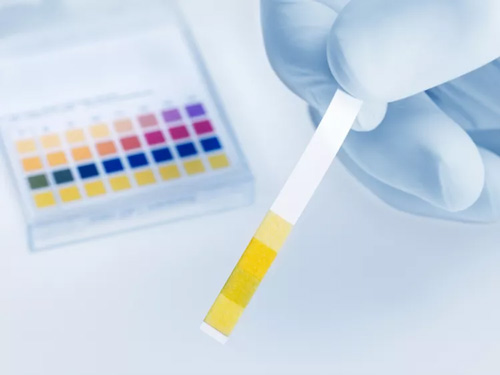pH, short for “potential of hydrogen,” is a fundamental determinant that can hold immense significance in determining water’s suitability for human consumption. This measure delineates whether a solution is acidic, neutral, or alkaline and plays a vital role in assessing the overall quality of drinking water.
Understanding and controlling pH levels is crucial as it impacts the taste, safety, and effectiveness of water treatment processes. Therefore, monitoring and maintaining an appropriate pH range in drinking water is essential in ensuring the safety of your water.
Understanding pH
The pH scale, a logarithmic scale ranging from 0 to 14, serves as the universal yardstick to gauge the acidic, neutral, or alkaline nature of substances. A pH of 7 denotes neutrality, while pH values below 7 indicate acidity, and those above 7 signify alkalinity.
Within the context of drinking water, maintaining an equilibrium at or around neutrality (pH 7) is considered optimal for human consumption. Deviations from this balance have been linked to negative impacts on human health.
Factors Influencing pH In Drinking Water
The pH of drinking water is subject to a multitude of factors stemming from natural sources and human interventions. Natural geological formations, encompassing rocks, soil composition, and the presence of minerals, significantly influence water’s pH profile.
Likewise, human activities exert considerable influence; water treatment processes, the choice of materials used in distribution pipes, and wastewater discharge can all alter the pH of drinking water. Environmental factors such as pollution and the variability induced by rainfall contribute to fluctuating pH levels in water sources.
Testing And Measurement of pH in Drinking Water
Various methodologies are available to measure pH, from basic litmus paper tests to sophisticated pH meters. Governments and health regulatory bodies globally have instituted strict standards for safe pH levels in drinking water.
Regular testing and vigilant monitoring of water supplies are crucial to mitigating potential health risks associated with inadequate pH levels in drinking water, such as leaching of lead from copper pipping. Monitoring plays a pivotal role in preserving the well-being of individuals relying on these water sources.
Effects Of pH On Drinking Water Quality
The pH of drinking water bears implications for human health, environmental sustainability, and infrastructure integrity. Extreme pH levels—either highly acidic or excessively alkaline—can pose severe health risks to consumers.
Acidic water may corrode distribution pipes, leaching metals such as lead into the water supply, thereby posing a threat to public health. Conversely, highly alkaline water can precipitate scale buildup in plumbing systems, potentially impairing water flow and quality. Moreover, pH significantly influences the taste, odor, and overall aesthetic appeal of drinking water, directly impacting consumer satisfaction and usage patterns.
pH Correction and Treatment Methods
Addressing extreme pH levels necessitates the implementation of effective neutralization techniques. Various water treatment processes, including calcium neutralization and chemical treatment with sodium hydroxide, are employed to rectify and stabilize pH levels in drinking water. These measures are pivotal in ensuring that consumers receive water that not only meets safety standards but is also palatable and aesthetically pleasing.
Global Perspectives and Concerns
Variations in water source pH levels are markedly influenced by geographical diversity and human activities. These fluctuations present substantial risks to human health, aquatic ecosystems, and overall environmental well-being. The imbalances in pH levels necessitate proactive measures to safeguard against their adverse effects. Mitigating these challenges involves multifaceted approaches that can be tailored to your specific water quality.
Find out the pH of your Drinking Water with Hague Quality Water of Maryland
The pH of drinking water stands as a cornerstone parameter in evaluating its quality and safety for human consumption. Maintaining a balanced pH level within prescribed limits is imperative to uphold public health and environmental sustainability.
Routine testing, adherence to regulatory standards, and prompt corrective measures are pivotal in ensuring optimal pH levels in drinking water supplies, and the efficacy of other water treatment. To learn more, and to setup a complimentary consultation, call Hague Quality Water of Maryland at (410) 757-2992.



